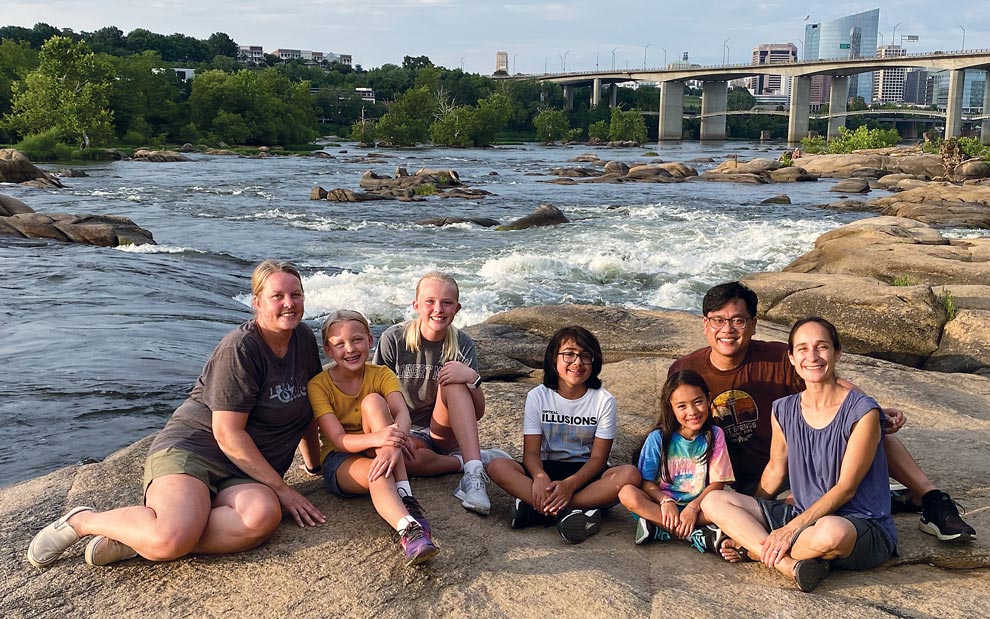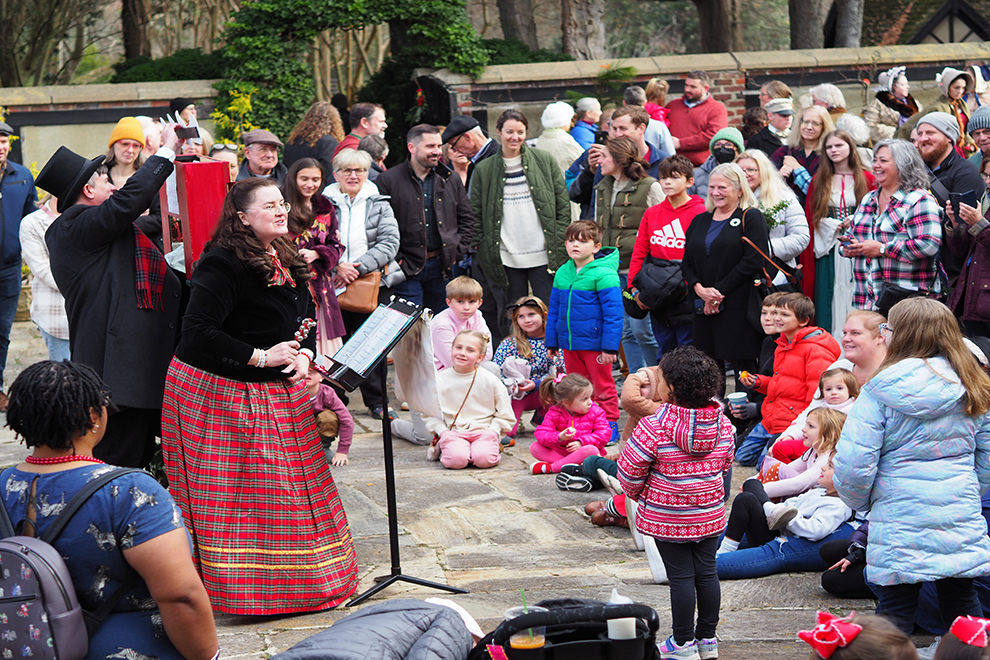Several years ago I conducted a blind taste test for a small group of friends and family members: a variety of bottled waters versus Richmond’s tap water. Our tap water won.
All of Richmond’s drinking water comes directly from the James River, and it’s filtered and cleaned prior to reaching our taps. Richmond’s Department of Public Utilities has invested millions to ensure that the water is safe and healthy. But remember, although the James is extremely clean, it’s not a good idea to drink unprocessed water from any river or stream.
What about swimming? The James is safe for swimming and wading except for forty-eight hours or so after a torrential rain in Richmond. The city’s storm water overflow system can back up into the wastewater system and empty into the river. Torrential rains – like the one that happened in mid-May just prior to Dominion Energy Riverrock – impact an ever increasing number of users of the river. State legislation calls for the overflow problem to be remedied by 2035 – a complex engineering challenge that will cost an estimated $1 billion.
Healthy water is not only necessary for life, but it’s also the foundation for a variety of other activities along the river such as fishing and floating, paddling and climbing, hiking and biking, classes and camps, and many other kinds of recreation and commerce.
I know a lot about the James River. It is my privilege to have had meaningful involvement with the James for more than forty years. From my front row seat, I’ve witnessed a transformation of this glorious body of water and the city it nourishes. I’ve written two books and a variety of articles about the river, taught fly-casting along its banks, and even painted its fish – one painting was enlarged for a 22-foot billboard in downtown Richmond.
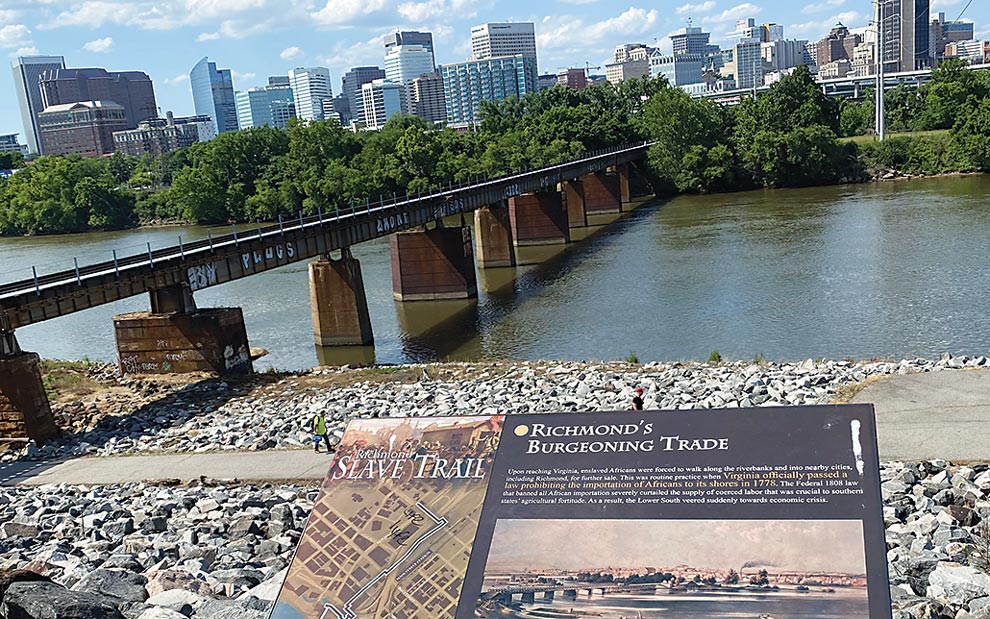
Centuries on the James River
It’s difficult to imagine a time without the vibrant James River we know and love running through the heart of our region – especially if you’re a transplant to Richmond. Until just a few decades ago, however, area families avoided the James River. It was inundated with chemicals, trash, and human waste.
Since English ship captain Christopher Newport arrived at what is now downtown Richmond in 1607, the river has had three fundamental purposes: transportation, hydro-power, and disposal for waste and sewage. William Byrd II initiated industry along the river when he established the town of Richmond in 1737 on the north side of the river. In 1800, Hollywood Paper Mill was built on the north bank. It was followed by the 1836 opening of Tredegar Iron Works. It was more than one hundred years later (in 1958) that wastewater and sewage entering the river were first treated. And it wasn’t until the 1990s that the Combined Sewer Overflow project finally began to divert sewage overflow out of James River Park (a linear park system that spans the City of Richmond from west to east along both sides of the James River from Huguenot Flatwater to Ancarrow’s Landing). In 2009, the possibility of any future commercial development within James River Park System was erased when the Capital Region Land Conservancy worked with the City of Richmond Department of Parks, Recreation, and Community Facilities to record a conservation easement protecting the Park.
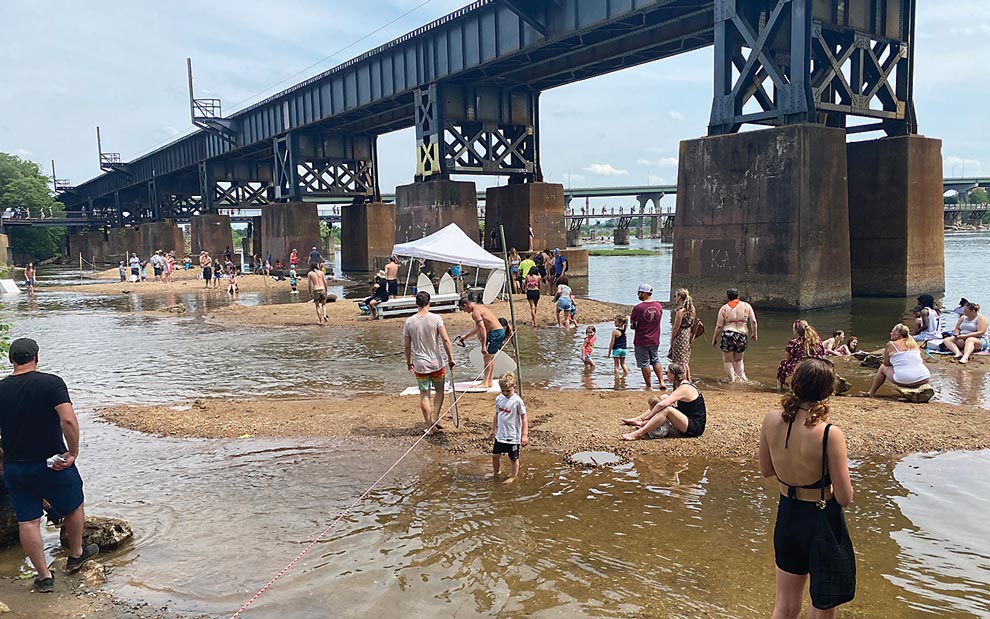
Major Comeback Story
The James River begins in the Appalachian Mountains and flows 348 miles to the Chesapeake Bay. As early settlers cleared and cultivated the land upstream for animals and farming, additional pollutants traveled downstream to Richmond. This eventually included fertilizers and insecticides that, aided by the disappearance of riparian buffers (areas adjacent to a stream, lake, or wetland that contain a combination of trees, shrubs, and other perennial plants to provide conservation benefits) were easily rain-washed into the James. The river gradually became a toxic, environmental disaster. But in 1972, the national Clean Water Act was passed. That federal legislation was followed by stringent regulations, significant funding, and persistent advocacy – all of which have resulted in today’s success story.
Now Richmond families enjoy not only being in and on the city’s river, but also viewing dramatic evidence of its health: leaping Atlantic sturgeon, plentiful great blue herons, playful river otters, and an abundance of nesting bald eagles. Cleaner water and protected land have created a natural smorgasbord of flora and fauna. There are deer, beaver, muskrats, mink, foxes, and more. Hundreds of species of wildflowers blossom throughout the year and the river is bordered by a forest of black gum, sweet gum, sycamore, beech, oaks, and many other trees.
The James River’s restorative comeback has been so remarkable that in 2019, it was awarded the Thiess International Riverprize, the world’s foremost award in river basin management. Other rivers that have received the award include such notables as the Danube in Europe, the Mekong in East Asia and South East Asia, and China’s Sha River.

The James and the Community
James River Park now gets more than two million visits each year, and festivals and events along the river get an additional one million – large numbers that attest to Richmond area families’ love for and enjoyment of the river.
Richmond families have contributed greatly to the river’s vitality. You’ll see evidence of the volunteer work along the city’s twenty-two miles of riverside trails – like Buttermilk, North Bank, and Wetlands – trails that traverse luscious woods, historic structures, and flat, open areas. The trails are subject to continual maintenance and improvement. The City of Richmond is responsible for caring for the 600-acre James River Park System. That work is complemented by thousands of volunteers through many organizations, which are sometimes documented with signage and plaques on the trails they manicure and clean. In some cases, these organizations have constructed walkways and bridges along the trails.
For decades, nonprofit organizations have led the way in engaging volunteers to help the river’s welfare. Three of my favorites include: Friends of James River Park, the organization that contributes the most money and volunteers to the park (jamesriverpark.org); James River Outdoor Coalition, which organizes volunteer efforts to improve facilities and takes an active role in issues that affect the James River Park’s usage and resources (jroc.net); and James River Association, which presents a unified voice for all 348 miles of the river and takes action to promote conservation and responsible stewardship of its natural resources (thejamesriver.org).
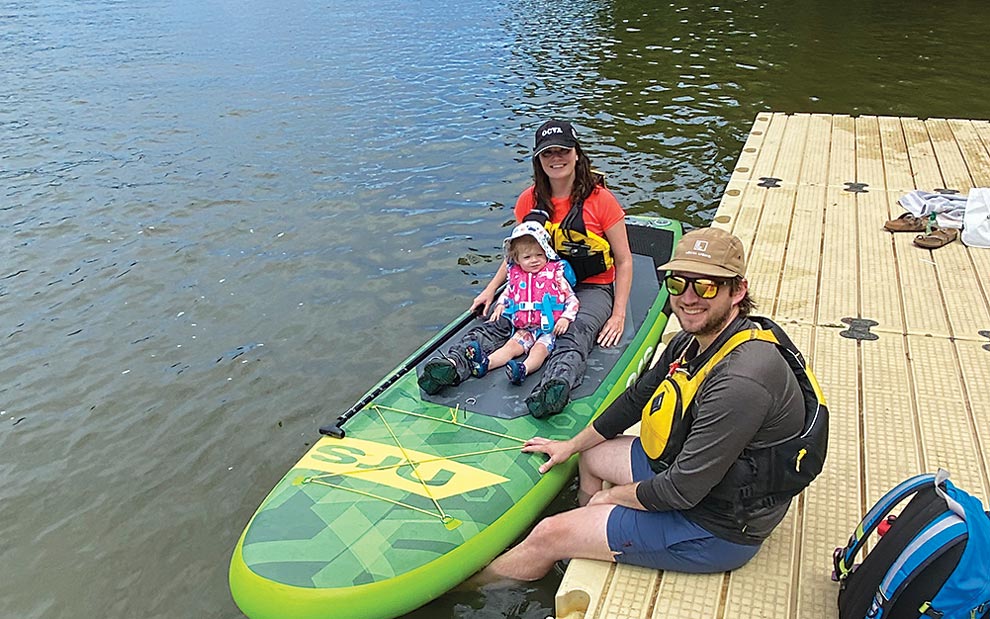
Why Is a Healthy James Important?
The experience and enjoyment of nature, recreation, clean water, and fresh air are obvious benefits of a healthy James River, and there is an economic impact to explore as well.
According to a 2016 Virginia State Parks Impact Report by Vincent P. Magnini and Muzaffer Uysal, local visitors to the river spend an average of $10.99 per day. Non-local visitors spend $32.99. A survey completed in 2012 by Victoria A. Shivy estimated that approximately 58.7% of the visitors to James River Park are from out of town. Multiply daily expenditures by the millions of annual visits and you get a huge economic impact.
Richmond Region Tourism showcases the river in its campaigns to attract visitors to the city. Special events on the James, such as Dominion Energy Riverrock and the Richmond Folk Festival, attract families from well beyond Richmond, as well as nationally renowned athletes and performers.
In 2012, readers of Outside Magazine voted Richmond the most livable river town in the country, after evaluating fifty urban rivers throughout the nation. More than a decade later, this distinction is still an attraction for businesses and families to relocate to Richmond.
Another example of economic impact that affects families is the values of their homes. VCU’s 2017 “Economic Impact of the James River Park System” report by Victoria A. Shivy and I-Shian Suen found that single-family residences have a $6.79 increase in value for every foot closer they are to the boundaries of James River Park – that’s $8,963 per quarter mile!
The economic and recreational benefits of the river are due directly to the river’s health – health that can’t be taken for granted.

Supporting the Health of the James
There are many ways families can advocate for and have a personal impact on the river’s health. On the James River Association’s (JRA) website, you’ll find instructions for family projects such as installing rain barrels on your property to reduce the amount of stormwater and nonpoint pollution (pollution that results from fertilizer, pet waste, and pesticides) that leave your property.
Planting trees and native plants, removing invasive species, and picking up after your dog are other examples of how families can help support the health of the James. Every Richmond family can take the JRA pledge to maintain a River Hero Home and be part of a community of stewards who realize the first step to a cleaner James River starts at home.

How Birds Tell the Success Story
Families looking for evidence of the health of the James can find it above the waters. Close to one hundred species of birds are commonly seen along the river in our area. Ecologists agree that birds are abundant only when healthy water produces a vibrant ecosystem of water life, plant life, and insect life – all of which are sources of nutrition.
Jon Lugbill, executive director of Sports Backers in Richmond and world champion whitewater canoe slalom racer, remembers paddling the James in the seventies when he was just twelve years old. He said the James was one of the dirtiest rivers he had ever encountered. I haven’t asked him, but I would be willing to bet he wouldn’t recall seeing an abundance of birdlife on that river outing.
In the foreword of my new book about the James River, Lugbill shares a remarkable birding event he witnessed in 2022. While paddling in downtown Richmond, he saw an osprey, a bald eagle, and a hawk battle for the same fish in mid-air, a confirmation that the James is in fabulous shape.
I hope this article has helped you not only learn about the James River, but also appreciate it even more. Here’s hoping you and your family can be part of the James River success story this summer – whether it’s by land, by water, or by air.
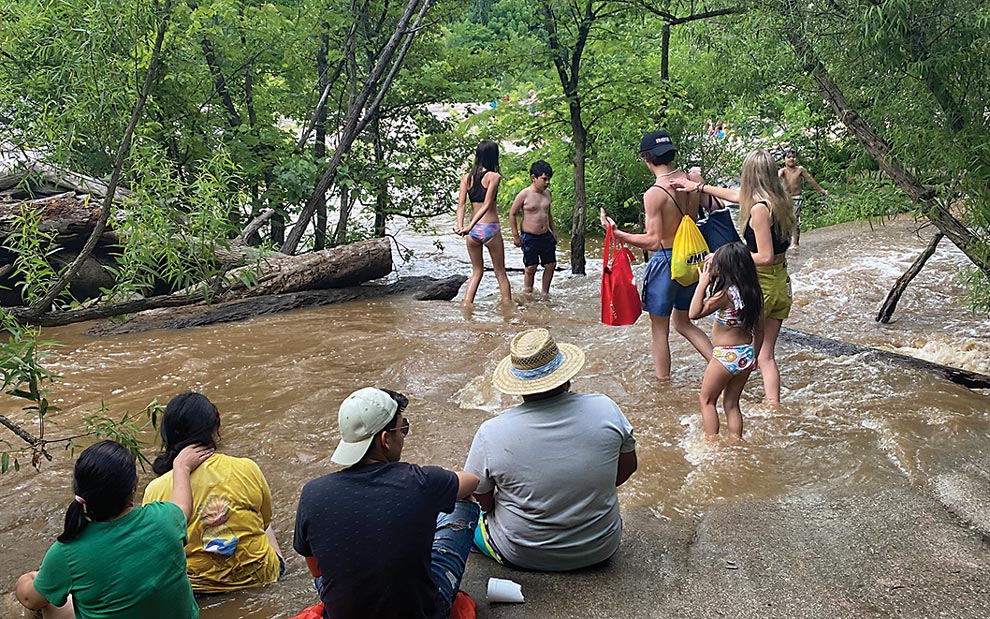
10 Ways to Do the James:
1. Snorkeling
Pony Pasture, Belle Isle, the Wetlands, and other parts of the river are great for donning a mask and exploring below the water. You’ll not only see small minnows, crayfish, and hellgrammites, but also five or six kinds of aquatic snails, many of which can be found near one another, often on the upstream and downstream sides of the same rock. Adventurous families can go underwater and look beneath boulders and rocky overhangs where they’ll sometimes encounter a large catfish.
2. Nature Bingo
Make a bingo grid that includes things that can be found along the river such as animal tracks, acorns, feathers, wildflowers, berries, hickory nuts, mushrooms, etc. Don’t collect them – natural things along the river are to be left for everyone to enjoy – simply mark the bingo sheet. While playing nature bingo, it would be fun to incorporate nature apps that identify species of trees, flowers, animal tracks, and more. Warning: There is an abundance of poison ivy along the James – look for leaves of three and vines that often climb tree trunks.
3. 42nd Street Entrance
Located where 42nd Street meets Riverside Drive, this is my family’s favorite place along the river. You’ll enjoy boulder-strewn areas for rock-hopping, wading, swimming, sunbathing, fishing, and relaxing. It’s a great place for seclusion as well as enjoying nature. Note that getting from the 34-car parking lot to the river requires a downhill walk, including a footbridge over railroad tracks and across a shallow tributary stream.
4. River Glass
Although we don’t remove rocks, driftwood, flowers, or any other natural things from along the river, one of the things we can collect is river glass: pieces of glass that are worn smooth by the river’s currents and rocks and sands. Hunt for river glass in dry sandy areas. Some pieces can be quite old with incised markings. We have found the bottoms of old Coca-Cola bottles that feature names of cities such as Enid, Oklahoma, and York, Nebraska. You’ll also likely find another variety of old sea glass in worn pieces of ceramic tableware. Who knows how it ended up in the river!
5. The Pipeline
This is a bucket list item for folks who are agile enough to climb down a six-foot, metal-rung ladder and traverse a single-file catwalk. Located on the north side of the river just upstream from the 14th Street Bridge, the Pipeline’s seclusion offers up-close and exhilarating views of the river’s most challenging rapids and a look at the cauldron-bubbling area known as Devil’s Kitchen. In the springtime, you’ll see nesting great blue herons. There are areas at the upstream end of the Pipeline that, with careful footing and caution, are great for wading and shallow swimming.
6. Dry Rocks Fishing
The river bordering the south side of Belle Isle is filled with granite boulders. Here, endless puddles and shallow pools harbor all sorts of life, including catchable fish. Use worms or crickets for bait and fish among the mini-streams that snake between the boulders. Expect to catch small, beautiful sunfish. When not fishing, it’s fun to simply explore this vast expanse of the river’s granite riverbed.
7. Historic Slave Trail
The Historic Slave Trail starts at Ancarrow’s Landing (at the end of Brander Street) and proceeds along a wooded upstream path until merging with the Floodwall Walk. The Trail’s professionally designed and illustrated signage make this an important history lesson about Richmond as first, the hub of the transatlantic slave trade, and later, the domestic center of human trafficking until slavery was abolished in 1865. During Colonial times, after being unloaded from boats, kidnapped Africans walked this path upstream to the city’s jails that held the enslaved. Later, many enslaved people walked the Historic Slave Trail downstream to boats that were bound for the Deep South after they had been “sold down the river.”
8. Tredegar Beach
Located across Tredegar Street from the American Civil War Museum, Tredegar Beach is a safe, shallow, sandy riverbank playground for all ages. Parents can relax worry-free while watching their kiddos play with buckets and shovels among lots of newfound playmates. And you’ll enjoy viewing the action at the adjacent put-in/takeout for kayaks and paddleboards.
9. Biking
Whether your family likes easy, flat-surface bikeways or wooded, single-track challenges, Richmond’s James River has plenty to offer cyclists of all ages and abilities. Belle Isle’s Skills Area is a great place to practice. Learning to mountain bike is hard, and this area allows beginners and intermediates to learn skills in a safe environment. There are wood and rock features, drops and climbs, and narrow plankways, too – all of which replicate features encountered along the river’s trails. For flat-surface biking, families love the Virginia Capital Trail which begins in downtown Richmond at 17th Street along the Kanawha Canal and then proceeds downstream to Great Shiplock Park, Rocketts Landing, and on to Williamsburg (Virginia’s first Colonial capital, which is also on the James River).
10. Hiking
There are more than twenty-two miles of trails and pathways along Richmond’s segment of the James River – through thick woods, among historical sites, across pedestrian bridges, and along paved walkways. History-loving families may want to start on the Canal Walk with its twenty-two bronze medallions that each reveal part of the area’s history. High-energy hiking families will love the challenging Buttermilk Trail that features tight, twisty climbs, steep descents, and lots of rocks and roots. The ultimate challenge is hiking the seven-mile loop that includes the Buttermilk Trail on one side of the river and the North Bank Trail on the other, with connections via bridges.
Families should be aware of three rules while hiking: leashes are required for dogs, earbuds are discouraged (so you can hear approaching bikes), and avoid trails when they are wet or muddy (hiking contributes to erosion). Information about the trails can be found at jamesriverpark.org.

Your Guide to Enjoying the James River
John Bryan’s new book, The James River in Richmond – Your NEW Guide to Enjoying America’s Best Urban Waterway, is one way for families to better understand, enjoy, and learn how to attend to the short- and long-term health and vitality of our river. The book is a philanthropic project, produced with content and assistance provided by dozens of river lovers. All sales proceeds are donated (more than $15,000 as of June 1, 2023) to Richmond region nonprofits that help the river and Richmond communities. More than 6,000 free copies of the book have been given to twenty RVA nonprofit organizations to help their missions. Beyond Boundaries, for example, uses the books as it provides river outings to its clients with physical and cognitive disabilities, persons in recovery, veterans, and others.
If your nonprofit organization could benefit from the book, please contact John: jbryanfish@aol.com. For orders and information, check out the book’s website: jamesriverlovers.com.


